AT&T Inc. (NYSE:T) of Dallas, TX, is a multinational telecommunications company which is taking a lead role in the development of wireless technologies for unlicensed spectrum. Near the end of September it was announced that AT&T would join with fellow telco providers Verizon Communications Inc. (NYSE:VZ) and T-Mobile US (NYSE:TMUS) to create the Evolve coalition to advocate for the development of long term evolution in unlicensed spectrum (LTE-U) technology. Development of LTE-U would enable the use of LTE wireless protocols across unlicensed, public spectrum to provide better mobile broadband services. A trial of AT&T LTE-U services later this year could presage a fuller rollout of the technology in 2016.
Along with mobile services, the company is further looking to develop broadband services to deliver ultra-high speed Internet to some U.S. communities with its AT&T GigaPower network. The broadband Internet service, which aims to compete with the Google Fiber network created by Google Inc. (NASDAQ:GOOG), was recently introduced to some areas in and around San Antonio, TX. AT&T’s July merger with DirecTV also gives the company 26 million pay TV customers in the U.S. and 19 million subscribers in Latin American countries along with 100 million mobile and Internet users. DirecTV’s assets in South America could cost AT&T up to $1.1 billion on top of merger costs depending on 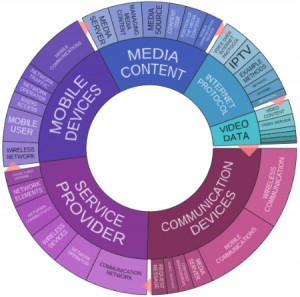 the exchange rate used to value DirecTV’s Venezuelan business interests. In an attempt to avoid regulatory fines from the Federal Communications Commission under net neutrality rules, AT&T has recently updated its data throttling policy for unlimited data plans to begin throttling techniques at 22 gigabytes of data usage in one month, up from only 5 GB.
the exchange rate used to value DirecTV’s Venezuelan business interests. In an attempt to avoid regulatory fines from the Federal Communications Commission under net neutrality rules, AT&T has recently updated its data throttling policy for unlimited data plans to begin throttling techniques at 22 gigabytes of data usage in one month, up from only 5 GB.
AT&T is a top player in the American patent world, receiving 1,896 patents from the U.S. Patent and Trademark Office in 2014, placing it 15th among all organizations receiving U.S. patents that year. That total also represented a nearly 15 percent increase over AT&T’s patent totals in the previous year. The three months leading up to this writing saw AT&T take in 341 U.S. patents, a bit of a slower pace of innovation than the company has enjoyed in recent years. As the text cluster graph from Innography shows us, almost half of AT&T’s recent patents have focused on mobile and communication devices; some development in IPTV and voice-over-IP (VOIP) can also be seen.
[Companies-1]
AT&T’s Issued Patents: From Preventing Unauthorized TV Use to More Efficient Legal Discovery
We noticed a collection of patents recently issued to AT&T which highlight the company’s IP holdings related to television services. U.S. Patent No. 9137494, titled Systems and Methods to Order a Content Item Deliverable Via a Television Service, protects a system including memory executable by a processor to search a data source including customer information to identify users associated with a wireless service and a television service, generating an offer message based on viewing history and viewer preferences for a deliverable video content item, sending the offer message to a mobile device, receiving an order for the video content item from the mobile device and initiating delivery of the video content item to a device other than the mobile device associated with the television service. This innovation gives television service subscribers a mobile interface for ordering specific media content like pay-per-view or on-demand 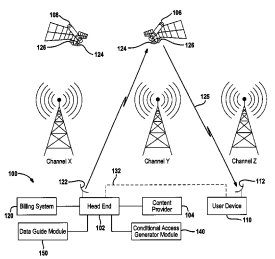 video.
video.
Prevention of the unauthorized use of television services is also reflected in U.S. Patent No. 9124933, entitled Method and System for Detecting Unauthorized Use of a Set Top Box Using Expected Terrestrial Signal Identification, originally a DirecTV patent which became AT&T’s property after its merger. It discloses a method of determining expected terrestrial signal identifiers for a billing address of a fixed user device at a head end, receiving a plurality of terrestrial signals identifying a respective source at the fixed user device, communicating the expected terrestrial signal identifiers to the fixed user device, storing those identifiers in the fixed user device’s memory, comparing stored identifiers to received identifiers and denying the fixed user device from accessing satellite signals in response to the comparison. This invention is intended to provide a mechanism to ensure that television subscribers are following access rules laid out by government regulations or contracted with content providers, like blackout restrictions.
Anyone who may have ever wanted to check out social media content related to television programs which are being watched may be interested to check out U.S. Patent No. 9100669, titled Method and Apparatus for Associating Micro-Blogs with Media Programs. The device claimed here has a memory containing instructions which are executable to receive a collection of micro-blogs, detect a set-top box receiving a television program, identify micro-blog subsets relevant to a requested television program, train a first classifier based on the initial set of micro-blogs, apply the first trained classifier to unannotated micro-blogs to generate a set of features for training a second classifier, apply the second trained classifier to the micro-blog collection to identify subsets of relevant micro-blogs, performing a sentiment analysis on the micro-blog subset to determine a trend relevant to a requested television program, supplying the micro-blog subset to the set-top box for concurrent presentation with the TV program and selecting scheduled media programming according to the micro-blog subset. This system is designed to give fans of TV programming a platform through which they can see trending social media information related to their favorite shows.
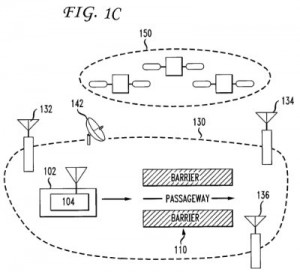 We’ve had a lot of fun profiling the rise of the high tech automotive sector this year and while AT&T won’t be unveiling its own car, we did take note of the intriguing commute innovation protected by U.S. Patent No. 9109911, entitled Payment of Highway Tolls Via a Mobile Telecommunications Network. It claims a method for processing toll payments by receiving a starting location of a mobile telecommunications device, receiving a destination, calculating a route from the starting location to the destination, identifying a toll plaza with booths along the calculated route, recording a date and time at which a mobile device passes through the respective toll booth, receiving a recorded toll transaction, comparing the recorded date and time with the recorded toll transaction and resolving any discrepancy between the recorded date and time and the recorded toll transaction. This invention leverages the ubiquity of mobile devices to establish what AT&T hopes will be a universal system for paying highway tolls more simply.
We’ve had a lot of fun profiling the rise of the high tech automotive sector this year and while AT&T won’t be unveiling its own car, we did take note of the intriguing commute innovation protected by U.S. Patent No. 9109911, entitled Payment of Highway Tolls Via a Mobile Telecommunications Network. It claims a method for processing toll payments by receiving a starting location of a mobile telecommunications device, receiving a destination, calculating a route from the starting location to the destination, identifying a toll plaza with booths along the calculated route, recording a date and time at which a mobile device passes through the respective toll booth, receiving a recorded toll transaction, comparing the recorded date and time with the recorded toll transaction and resolving any discrepancy between the recorded date and time and the recorded toll transaction. This invention leverages the ubiquity of mobile devices to establish what AT&T hopes will be a universal system for paying highway tolls more simply.
Home security systems which are more computationally sophisticated without dramatically increasing prices are featured within U.S. Patent No. 9143342, which is titled System and Method for Home Automation and Security. This patent protects a method of storing an indication that a building is expected to be occupied at a first time, controlling a behavior of a security system at the building based on the indication and changing the behavior of the security system when it’s determined that a particular person is not located in the building. This system provides home security system owners with a computer-based interface for adjusting settings to a security system without requiring a great deal of expensive processing equipment dedicated to the home security system.
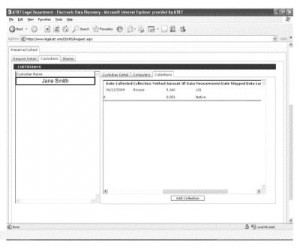 Given our focus on legal matters here at IPWatchdog, we were intrigued to see an AT&T invention meant to reduce the cumbersome nature of processing litigation, protected by U.S. Patent No. 9111254, entitled System and Method to Manage Electronic Data Related to a Legal Matter. It discloses a method of receiving a request to preserve data related to a legal matter and an identification of a data custodian, automatically accessing a directory via the private network in response to the request, receiving information from the directory indicating whether the identified custodian is accessible via the private network, sending a preservation notice to the identified custodian when the custodian is accessible and sending a preservation notice to a different custodian if the identified custodian is not accessible. This technology is designed to help organizations comply with discovery requests and avoid the significant legal and financial penalties associated with the failure to produce crucial documents.
Given our focus on legal matters here at IPWatchdog, we were intrigued to see an AT&T invention meant to reduce the cumbersome nature of processing litigation, protected by U.S. Patent No. 9111254, entitled System and Method to Manage Electronic Data Related to a Legal Matter. It discloses a method of receiving a request to preserve data related to a legal matter and an identification of a data custodian, automatically accessing a directory via the private network in response to the request, receiving information from the directory indicating whether the identified custodian is accessible via the private network, sending a preservation notice to the identified custodian when the custodian is accessible and sending a preservation notice to a different custodian if the identified custodian is not accessible. This technology is designed to help organizations comply with discovery requests and avoid the significant legal and financial penalties associated with the failure to produce crucial documents.
[Companies-5]
Patent Applications of Note: From Fiber Optics Traffic Management to Helmet Safety Sensors
AT&T’s GigaPower fiber optic network will be getting significant traffic directing upgrades thanks to innovations like the one outlined within U.S. Patent Application No. 20150222972, titled Method and Apparatus for Transporting Deterministic Traffic in a Gigabit Passive Optical Network. The method that would be protected here involves generating a timeslot schedule for transporting data by selecting a plurality of timeslots which are collected into first and second sets, detecting a change in an amount or type of data to be transported and generating a new timeslot schedule in response to the detected change. This innovation is designed to address issues with fiber optic network latency which can be caused by the dynamic reassignment of timeslots, which affords some flexibility in networking.
A social media service based upon a telephony platform is at the center of U.S. Patent Application No. 20150237214, entitled Method and Apparatus for Providing Ambient Social Telephony. It claims a method for notifying a particular user by monitoring a conference call, detecting a triggering event comprising a key word of interest pre-registered by the particular user and said during the conference call and notifying the particular user of the key word’s mention while also providing an option to join the conference call. This invention aims to improve upon the social experience of conference calls, which are often limited by time duration and no ability to spontaneously share the conference.
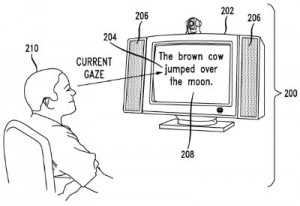 Many people believe that technology has the ability to improve and expand upon human capabilities but AT&T seems to be taking a more direct approach with the technology disclosed within U.S. Patent Application No. 20150248842, titled System and Method for Improved Human Learning Through Multi-Sensory Stimulus. This would protect a method of using a camera to determine the gaze focal point of a user reading a piece of text, determining a user reading pace based on shifts in the gaze focal point and adjusting the narration pace of a narrator based on the user reading pace and a predicted pace which is determined using the reading pattern of a different individual. The multi-sensory stimulus system provides narration to a reading user and is designed to reinforce the knowledge gained from the piece of text. A better understanding of human emotions is
Many people believe that technology has the ability to improve and expand upon human capabilities but AT&T seems to be taking a more direct approach with the technology disclosed within U.S. Patent Application No. 20150248842, titled System and Method for Improved Human Learning Through Multi-Sensory Stimulus. This would protect a method of using a camera to determine the gaze focal point of a user reading a piece of text, determining a user reading pace based on shifts in the gaze focal point and adjusting the narration pace of a narrator based on the user reading pace and a predicted pace which is determined using the reading pattern of a different individual. The multi-sensory stimulus system provides narration to a reading user and is designed to reinforce the knowledge gained from the piece of text. A better understanding of human emotions is
another R&D focus for AT&T to judge by the filing of U.S. Patent Application No. 20150235655, which is titled Real-Time Emotion Tracking System. It claims a device for tracking an emotional state change in an audio signal which![]() has a memory containing instructions that are processed to receive a sequential plurality of audio signal segments, analyzing each segment to determine an emotional state and a confidence score of the emotional state for each, sequentially analyzing the emotional state and confidence score of each segment to track a current emotional state throughout each segment and determining whether the current emotional state of the audio signal changes. The patent application’s background section indicates that this innovation would be used to analyze customer service calls for quality and training control purposes.
has a memory containing instructions that are processed to receive a sequential plurality of audio signal segments, analyzing each segment to determine an emotional state and a confidence score of the emotional state for each, sequentially analyzing the emotional state and confidence score of each segment to track a current emotional state throughout each segment and determining whether the current emotional state of the audio signal changes. The patent application’s background section indicates that this innovation would be used to analyze customer service calls for quality and training control purposes.
A system for streamlining the process of completing the various financial transactions that can be processed through a mobile computing device is detailed within U.S. Patent Application No. 20150269210, filed under the title Personal Customer Care Agent. This patent application would protect a method of aggregating and making information available to users by monitoring a first set of external information sources over the Internet for a first user, monitoring a second set of information sources for a second user, detecting new data at one of the first set of information sources, obtaining new data from that source, updating aggregated information for the first user with the new data and making the updated aggregated information available to the first user. This system is useful not only for aggregating financial transaction details but also price fluctuation details and service request information.
AT&T is also trying to ring in the next generation of voicemail technologies with the innovation that would be protected by U.S. Patent Application No. 20150256681, titled Visual Voice Mail Delivery Systems. This claims a method of receiving a voice mail message by a device of a subscriber, determining that the subscriber is a member of a first group and combining the voice mail message with a second voice mail message received by a second member of the group, but not a subscriber, to generate a combined message. This innovation is intended to improve visual voice mail systems, which provide message summaries that users can more quickly review, and their ability to be deployed with mobile long term evolution (LTE) networks.
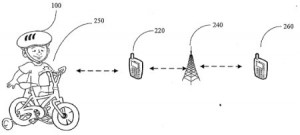 Finally, we were intrigued enough to take a closer look at the wearable technology developed by AT&T for head safety, described within U.S. Patent Application No. 20150223541, filed under the title Wireless Monitoring of Safety Helmets. The system disclosed here includes a memory containing instructions executable to receive pressure data from a wireless transceiver coupled to a pressure sensitive sensor attached to a person’s helmet and sending an emergency service alert when the head acceleration force data corresponding to pressure data satisfies a defined condition. This monitoring system enables a helmet wearer, especially children, to be monitored for head safety without restricting physical activity in any way.
Finally, we were intrigued enough to take a closer look at the wearable technology developed by AT&T for head safety, described within U.S. Patent Application No. 20150223541, filed under the title Wireless Monitoring of Safety Helmets. The system disclosed here includes a memory containing instructions executable to receive pressure data from a wireless transceiver coupled to a pressure sensitive sensor attached to a person’s helmet and sending an emergency service alert when the head acceleration force data corresponding to pressure data satisfies a defined condition. This monitoring system enables a helmet wearer, especially children, to be monitored for head safety without restricting physical activity in any way.

![[IPWatchdog Logo]](https://ipwatchdog.com/wp-content/themes/IPWatchdog%20-%202023/assets/images/temp/logo-small@2x.png)



![[Advertisement]](https://ipwatchdog.com/wp-content/uploads/2024/04/Patent-Litigation-Masters-2024-sidebar-early-bird-ends-Apr-21-last-chance-700x500-1.jpg)

![[Advertisement]](https://ipwatchdog.com/wp-content/uploads/2021/12/WEBINAR-336-x-280-px.png)
![[Advertisement]](https://ipwatchdog.com/wp-content/uploads/2021/12/2021-Patent-Practice-on-Demand-recorded-Feb-2021-336-x-280.jpg)
![[Advertisement]](https://ipwatchdog.com/wp-content/uploads/2021/12/Ad-4-The-Invent-Patent-System™.png)







Join the Discussion
One comment so far.
Nelson Avek
October 5, 2015 07:44 amI’m sorry, but I have to mention this.
As a regular user, I was curiously reading this post when at sudden I noticed that image of TV with the text “The brown cow jumped over the moon”. I was about to spit out my coffee. Nice picture. This post made my day.
Thanks for this informative post.